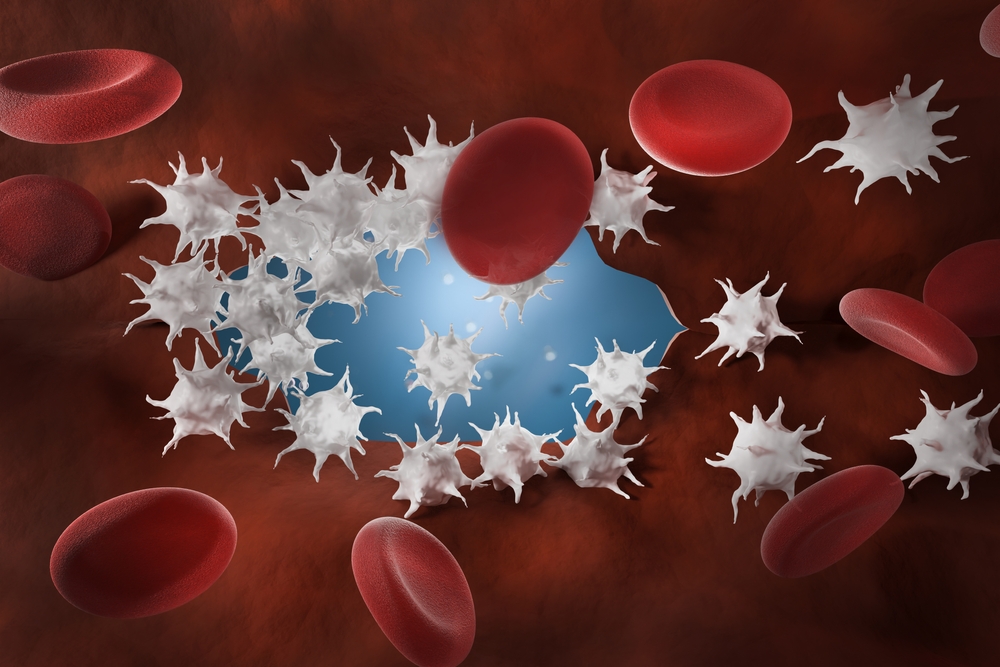
The INR test, also known as Prothrombin Time (PT), measures the time it takes for your blood to clot. It is used to monitor warfarin or similar anti-clotting medications. The PT test can also be used to check if you have a blood clotting problem associated with a blood disorder, liver damage or vitamin K status.
What is being tested?
The test measures how long it takes for your blood to begin to form clots. Prothrombin is a plasma protein produced by the liver. Clotting is caused by a series of chemical reactions (coagulation cascade), including the conversion of prothrombin to thrombin. The test used to measure this clotting factor is called prothrombin time or PT. It may be standardised as the International Normalised Ratio (INR).
How is it used?
The prothrombin time (PT) test, standardised as the INR test is most often used to check how well anti-coagulant or ‘blood-thinning’ tablets such as warfarin and phenindione are working. Anti-coagulant tablets help prevent the formation of blood clots (they do not ‘thin the blood’ as is popularly thought). This is particularly important in people with heart conditions such as atrial fibrillation or artificial valves, or people with a history of recurrent blood clots. The drug‘s effectiveness can be determined by how much it prolongs the PT (measured in seconds), or increases the INR (a standardised ratio of the patient‘s PT versus a normal sample). The test is not helpful with monitoring the “new” anticoagulants such as dabigatran, rivaroxaban or apixaban.
When is it requested?
If you are taking warfarin or a similar anti-coagulant drug, your doctor will check your INR regularly to make sure that your prescription is working properly and that the INR is appropriately increased. There is no set frequency for doing the test. Your doctor will order it often enough to make sure that the drug dose is right. Occasionally the PT or INR may be used on a patient who is not taking anti-coagulant drugs — to check for a bleeding disorder, liver disease or vitamin K deficiency, or to ensure clotting ability before surgery.
What does the result mean?
The test result for PT depends on the method used; results will be measured in seconds.
Most laboratories report PT results that have been adjusted to the International Normalised Ratio (INR). Patients on anti-coagulant drugs usually have a target INR of 2.0 to 3.0 (i.e. a prothrombin time 2 to 3 times as long as in a normal patient, using standardised conditions). For some patients who have a high risk of clot formation, the INR needs to be higher: up to 3.0 to 4.0. Your doctor will use the INR to adjust the dose of your drug to get the PT into the range that is right for you. An increased prothrombin time or INR means that your blood is taking longer to form a clot. If you are not taking anti-coagulant drugs and your PT is prolonged, additional testing may be necessary to determine the cause. Result of the PT is often interpreted with that of the aPTT in determining what condition may be present.
| PT RESULT | APTT RESULT | POSSIBLE CONDITION PRESENT |
| Prolonged | Normal | Liver disease, decreased vitamin K, decreased or defective factor VII, use of Rivaroxaban |
| Normal | Prolonged | Decreased or defective factor VIII, IX, or XI, or lupus anticoagulant present or use of Dabigatran |
| Prolonged | Prolonged | Decreased or defective factor I, II, V or X, von Willebrand disease, liver disease, disseminated intravascular coagulation (DIC), Rivaroxaban |
| Normal | Normal | Decreased platelet function, thrombocytopenia, factor XIII deficiency, mild deficiencies in other factors, mild form of von Willebrand’s disease |
Is there anything else I should know?
Some substances you consume — such as alcohol and different drugs, can interfere with the PT test and give a misleading result. Antibiotics, aspirin and cimetidine can increase PT. Barbiturates, oral contraceptives and hormone-replacement therapy (HRT), and vitamin K - either in a multivitamin or liquid nutrition supplement - can decrease PT. Make sure that your doctor knows all the drugs you are taking so that the PT results are interpreted correctly.
Common questions
Yes, although it may be harder to guarantee the accuracy of tests performed at home. Ask your doctor whether home testing using a point-of-care testing device is appropriate for you.
Only in the induction period, when a ‘loading’ dose is frequently given and correctly timed INRs are important for predicting the long-term ‘maintenance’ dose. You should ideally take your anti-coagulant tablets in the evening because this allows your doctor to modify your dose up or down on the same day as your INR test.
The use of any of the drugs mentioned above can alter your results, as can the use of diuretics and antihistamines and the onset of illness or allergies. Certain foods, such as beef and pork liver, green tea, broccoli, chickpeas, kale, turnip greens and soybean products contain large amounts of vitamin K and can alter PT results. The blood collection technique and the difficulty in obtaining the blood sample can also affect test results.
What is Pathology Tests Explained?
Pathology Tests Explained (PTEx) is a not-for profit group managed by a consortium of Australasian medical and scientific organisations.
With up-to-date, evidence-based information about pathology tests it is a leading trusted source for consumers.
Information is prepared and reviewed by practising pathologists and scientists and is entirely free of any commercial influence.